Check out the efficient air cooled heat exchangers designed by Erk Proses for industrial needs. Increase energy efficiency and contact us for detailed information.
Air-cooled heat exchangers are devices designed to transfer heat from a high temperature fluid to the low temperature outdoor environment. Air-cooled heat exchangers are suitable for use in processes where the desired cooling can be achieved with outdoor air as an operation requirement.
Air-cooled equipment can be operated with less operating costs than water-cooled systems when appropriate design conditions are observed. Especially when operating with high temperature process fluids, evaporation losses are prevented and operating costs are reduced.
ERK with its expert engineers in the field, makes the relevant product designs in line with the desired operational values in accordance with the following standards;
• ASME Section VIII Division 1, • API661,
• TEMA
1- Fan
2- Fan ring
3- Air channel
4- Inlet-outlet nozzles
5- Tube bundle
6- Steel construction
7- Fan drive system
8- Tube bundle header
9- Inlet bell
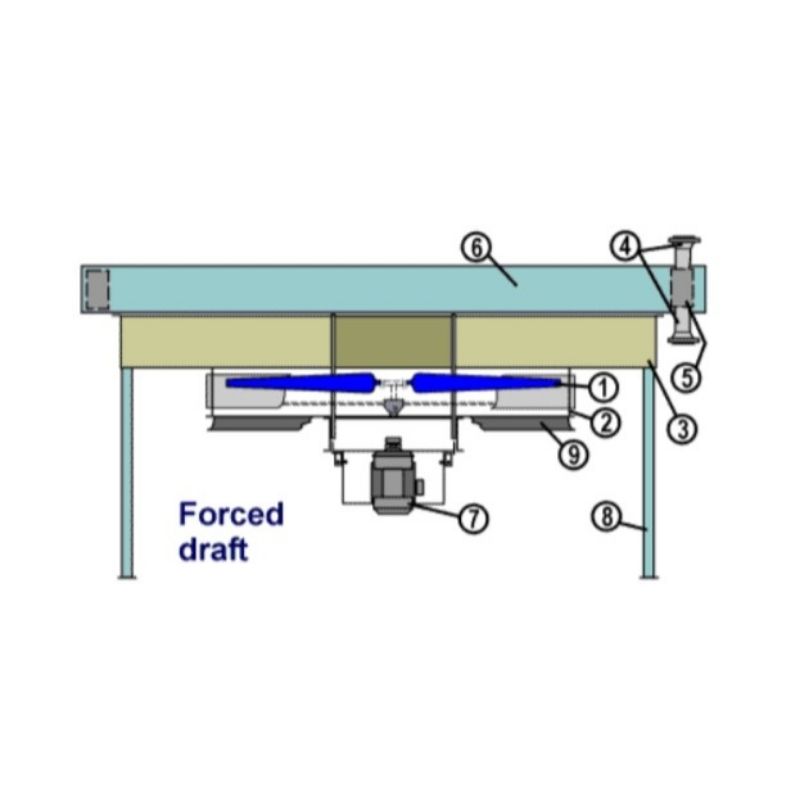
Another advantage of air-cooled heat exchangers is the fins on the pipe. The contact point of the air flowing on the pipe is increased thanks to the fins integrated into the outer surface of the pipe, affecting the effective heat transfer positively. The fins are generally spiral wound aluminum for good conductivity and production economy. The fins can also be manufactured from other materials such as copper, steel and stainless steel. The fin types used in the industry are as follows depending on various corrosive conditions and values such as temperature etc.
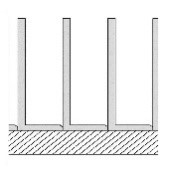
It is the most widely used fin type in air-cooled heat exchanger construction. The fin is produced by wrapping an aluminum strip around the pipe. It is used in processes that require medium degree of mechanical and thermal stability. Since the pipe surface is completely covered with fin material, it is less affected by corrosive conditions. It can work efficiently at a maximum temperature of 120 ° C.
Tubes with embedded fins have very good heat conduction properties and high thermal stability. Mechanical stability depends on the choice of fin material. The fin is spirally wound into a groove in the pipe and is tied tightly by rolling. The fin material can be produced from aluminum and carbon steel, while the main material of the tube can be made of carbon steel and stainless steel.It can work efficiently at a maximum temperature of 400°C.
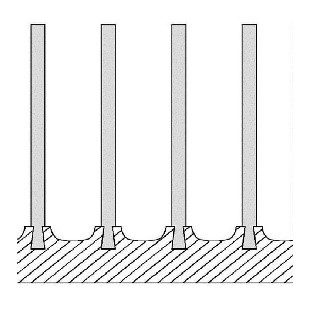
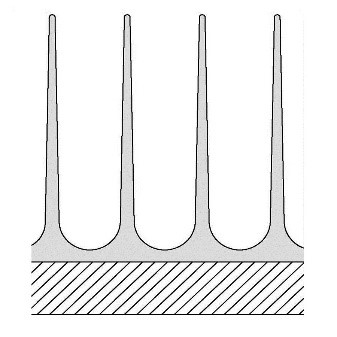
Extruded aluminum finned tubes have high mechanical and thermal stability. Another soft pipe such as copper or aluminum is passed outside of this type of pipes and it is produced by extrusion method from this outer pipe. This creates a strong bond between tube and fin with excellent heat conduction properties. It can work efficiently at a maximum temperature of 300°C.
The aluminum fin strip is formed by overlapping the fins as shown in the figure and wrapped in an L shape and at a certain tension on the tube. The most efficient working temperature for LL fin is 180°C. The fin material is produced from aluminum or copper.
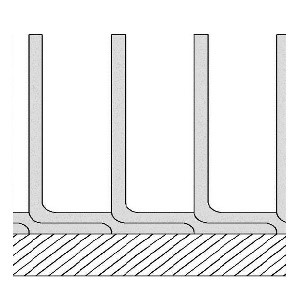
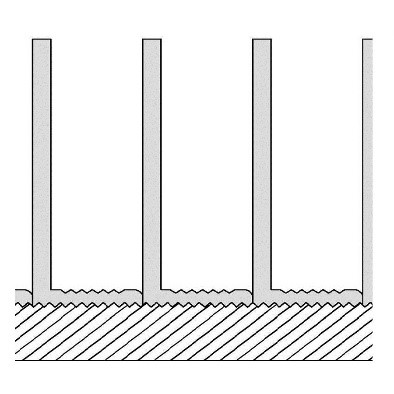
The base tube is produced exactly as "L" fin, except that it is serrated before the wing foot is applied. After application, serrations are made at the corresponding place on the fin foot base tube, thus increasing the bond between the fin and tube, which improves the heat transfer properties. Maximum efficient operating temperature for this fin type is 250°C. The fins are made of aluminum or copper.
One of the factors that stand out as a disadvantage in air-cooled heat exchangers is noise. The main source of the noise generated in these products is the fans. ERK resolves such issues by taking all conditions into consideration during the design phase. The speed of the fans can be adjusted according to the process load and outdoor weather conditions, as well as by increasing the number of blades or by using larger blades, a serious reduction in noise can be achieved.